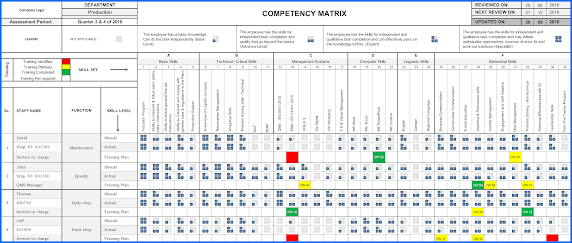The medical device qms industry is going through a lot of disruptions. It is a critical industry that is witnessing rapidly changing regulatory requirements. The industry operates in a highly regulated environment where quality and safety are non-negotiable. One crucial aspect of maintaining these standards is the Corrective and Preventive Action (hereinafter CAPA) process. CAPA is a systematic approach to identifying, investigating, and rectifying issues that could compromise the quality of medical devices or lead to non-compliance with regulatory requirements. Many organizations turn to CAPA software to manage this process efficiently, which automates and streamlines the CAPA workflow.
Understanding CAPA Software in Detail:
CAPA management software is a specialized tool designed to manage the entire CAPA process. The software helps organizations track, document, and resolve issues that could affect their medical devices' safety, quality, or regulatory compliance. By automating various aspects of CAPA, the software ensures consistency, accuracy, and efficiency in addressing non-conformances and potential risks.
The CAPA process involves several key steps:
- Identifying the problem
- Conducting a root cause analysis
- Implementing corrective actions
- Monitoring the effectiveness of these actions
CAPA software enables these steps by providing a centralized platform for tracking and documenting all related activities. It improves the efficiency of the CAPA process and ensures that all actions are well-documented, which is crucial for regulatory audits and inspections.
Key Features of CAPA Software
- CAPA software typically includes several features designed to streamline the CAPA process: Issue Identification and Tracking: The software allows users to log issues as soon as they are identified. The issues include non-conformances, customer complaints, audit findings, or other quality-related incidents.
- Root Cause Analysis: Once an issue is logged, the software facilitates a systematic investigation to determine the root cause. Tools like fishbone diagrams, 5 Whys, and Failure Mode and Effects Analysis (FMEA) are often integrated into CAPA software to aid this process.
- Corrective and Preventive Actions: Based on the root cause analysis, the software helps users develop and implement corrective actions to address the issue and preventive actions to avoid recurrence. These actions are then assigned to responsible parties, with deadlines and priorities clearly defined.
- Effectiveness Monitoring: CAPA software includes tools to monitor the effectiveness of the implemented actions, ensuring that the issue has been fully resolved and that similar problems will not arise in the future.
- Documentation and Reporting: The software automatically generates reports and maintains detailed records of all CAPA activities. Records are critical for regulatory compliance, as organizations must demonstrate that they have effectively managed any issues that could impact product quality or safety.
- Integration with Other Enterprise Quality Management Software (QMS): CAPA software often integrates with other QMS modules, such as document control, training management, and risk management. Integration ensures that CAPA activities are aligned with the organization’s overall quality objectives.
Importance of CAPA Software in the Medical Device Industry
The medical device industry is subject to stringent regulations from bodies like the FDA, ISO, and other international regulatory agencies. Non-compliance with these regulations can result in severe consequences, including product recalls, fines, and damage to the company’s reputation. CAPA software plays a critical role in helping organizations maintain compliance by ensuring that all quality-related issues are promptly and effectively addressed.
One of the primary benefits of CAPA software is its ability to provide a systematic approach to issue resolution. This systematic approach is essential in the medical device industry, where the margin for error is minimal. CAPA software ensures that no steps are overlooked and that all actions are documented.
Additionally, CAPA software helps organizations identify trends and patterns in quality issues. By analyzing data from multiple CAPA incidents, the software can highlight recurring problems, allowing organizations to address underlying issues before they escalate.
When and What Should Trigger a CAPA?
A CAPA is triggered whenever an issue is identified that could impact a medical device's quality, safety, or compliance. However, not all issues require a full CAPA process. It is important to distinguish between minor incidents that can be resolved quickly and more significant issues that necessitate a formal CAPA.
Here are some common triggers for initiating a CAPA:
- Non-Conformances: Any deviation from established quality standards, specifications, or regulatory requirements should trigger a CAPA. Non-conformances could be identified during internal audits, inspections, or routine product testing.
- Customer Complaints: Customer or end-user complaints regarding product quality, performance, or safety should prompt a CAPA. These complaints may indicate underlying issues that must be addressed to prevent further occurrences.
- Adverse Events: Any event that results in serious injury or death or poses a significant risk of harm must trigger a CAPA. The medical device industry is highly regulated in this regard, and companies must investigate and report adverse events to regulatory authorities.
- Audit Findings: External audits, whether conducted by regulatory agencies or third-party auditors, often identify areas of non-compliance or potential risks. These findings should trigger a CAPA to address the identified issues and ensure ongoing compliance.
- Product Recalls: If a product recall is necessary due to a defect or safety concern, a CAPA must be initiated to investigate the root cause and prevent recurrence.
- Trending Data: CAPA software can analyze data from multiple sources to identify trends and patterns in quality issues. If a particular issue occurs repeatedly, a CAPA should be initiated to investigate the root cause and implement corrective actions.
- Supplier Issues: Problems with suppliers, such as substandard materials or components, should trigger a CAPA. Ensuring that all materials and components meet quality standards is essential for maintaining the safety and effectiveness of medical devices.





